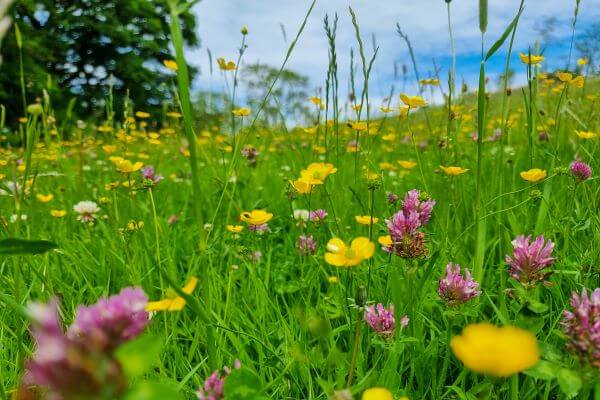What rural landowners need to know about restoring nature to their farmland

Rewilding involves returning land back to natural ecosystems, allowing native species and natural processes to flourish. According to The Ecologist, the UK is among the most nature-depleted countries in the world, with native woodlands making up just 2.5% of land and a widespread decline of important pollinating insects (such as wild bees and hoverflies) across the country.
The environmental benefits of rewilding range from reversing biodiversity loss to capturing carbon emissions, flood prevention and even providing new habitats for species that must adapt to climate change. All these benefits help to maintain the Earth’s life-supporting ecological processes.
From small-scale afforestation to ambitious projects that reintroduce species such as boar and water voles, there are plenty of rewilding options to explore. For many farmers, however, the crucial question is: is rewilding compatible with my business?
Rewilding for farms and estates
It is understandable that anylandowner will have questionsand concerns about changing theuse of land. For some, rewildingwill mean a complete switch fromintensive agriculture to regenerativemethods such as agroecology.This has benefits that includeincreased soil fertility. Scientistsestimate that there are fewer than50 harvests left until soil fertilityreaches such critically low levelsthat maintaining reliable crop yieldsbecomes impossible. For those whowant to pass on their land to futuregenerations, rewilding can be anattractive option.
For livestock farmers, rewilding can be an exciting opportunity to introduce native herbivores such as elk, deer and boar. This can also have financial rewards, as well as playing an important biological role in restoring healthy vegetation to the land. In addition, rewilding can offer opportunities for eco-tourism or shooting, which can create significant financial opportunities.
Assessing the benefits and risks
It’s important to think carefully about the risks of rewilding as well as its benefits. For instance, could introducing new large grazing species pose a risk to the public? There may also be implications for the value of land, which must be taken carefully into account for tax purposes.
If rewilding includes diversifying the business, this will require careful planning, as well as putting the correct insurance in place.
Changing the use of land and adopting less intensive farming methods is likely to have financial impacts, which would naturally
concern many rural businessowners.
What support is available to help mitigate the risks?
In 2021 Defra announced it would be launching its new Environmental Land Management (ELM) schemes, which will incentivise farmers to plant woodland, provide new habitats for wildlife, increase biodiversity, and contribute to improved water quality. There will be a seven-year transition from the Common Agricultural Policy to the new system of green subsidies for farmers who support the environment.
There will be three new environmental land management schemes:
Sustainable Farming IncentiveLocal Nature RecoveryLandscape Recovery[1]
Together, these reforms represent the most impactful changes to farming and land management in 50 years.[2]
The Sustainable Farming Incentive is due to start in 2022 before being scaled up between 2023 and 2025. After 2025, the incentive will be available to all eligible farmers.
The Local Nature Recovery scheme is due to begin in late 2022, with plans for it to be rolled out across England by the end of 2024, while the Landscape Recovery scheme will undergo at least two rounds of pilot projects before its introduction.[3]
While these new schemes are being rolled out, existing schemes such as the new Countryside Stewardship agreements will remain available. However, from 2025 onwards, the new environmental land management schemes will be the only ones open for applications.
Defra says the new schemes will be easier for farmers and landowners to navigate, with fewer forms to fill out, as it will be possible to access multiple schemes through a single service.
Ultimately, participation in these schemes is voluntary. Farmers and landowners know their land and are well-placed to judge its potential for different rewilding approaches.
[1] https://www.gov.uk/government/publications/environmental-land-management-schemes-overview
[2] https://www.farminguk.com/news/defra-unveils-next-stages-of-elm-schemes-but-concern-remains_59611.html
[3] https://defrafarming.blog.gov.uk/2022/01/06/get-ready-for-our-3-new-environmental-land-management-schemes/



